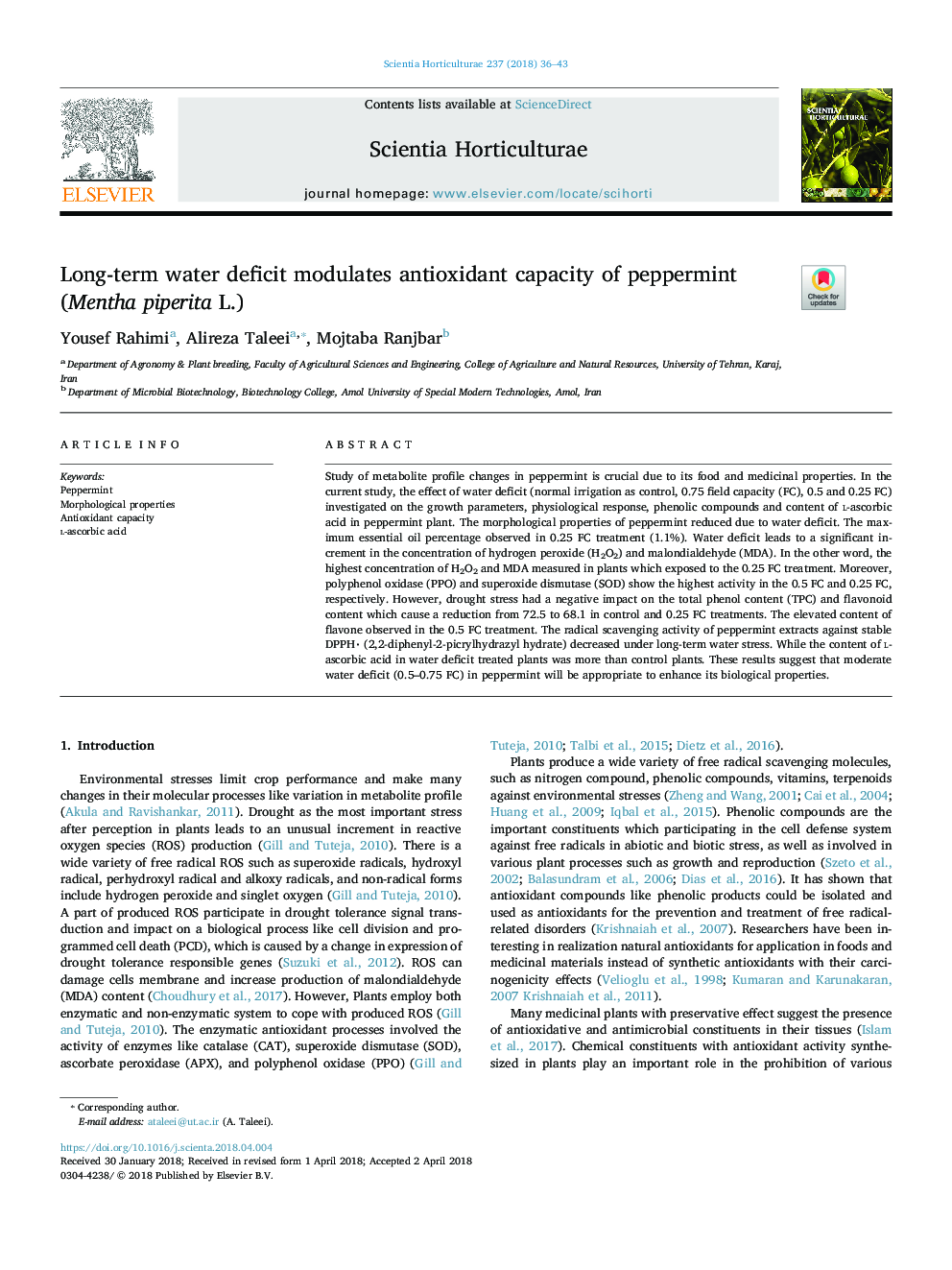| Article ID | Journal | Published Year | Pages | File Type |
|---|---|---|---|---|
| 8892540 | Scientia Horticulturae | 2018 | 8 Pages |
Abstract
Study of metabolite profile changes in peppermint is crucial due to its food and medicinal properties. In the current study, the effect of water deficit (normal irrigation as control, 0.75 field capacity (FC), 0.5 and 0.25 FC) investigated on the growth parameters, physiological response, phenolic compounds and content of l-ascorbic acid in peppermint plant. The morphological properties of peppermint reduced due to water deficit. The maximum essential oil percentage observed in 0.25 FC treatment (1.1%). Water deficit leads to a significant increment in the concentration of hydrogen peroxide (H2O2) and malondialdehyde (MDA). In the other word, the highest concentration of H2O2 and MDA measured in plants which exposed to the 0.25 FC treatment. Moreover, polyphenol oxidase (PPO) and superoxide dismutase (SOD) show the highest activity in the 0.5 FC and 0.25 FC, respectively. However, drought stress had a negative impact on the total phenol content (TPC) and flavonoid content which cause a reduction from 72.5 to 68.1 in control and 0.25 FC treatments. The elevated content of flavone observed in the 0.5 FC treatment. The radical scavenging activity of peppermint extracts against stable DPPH (2,2-diphenyl-2-picrylhydrazyl hydrate) decreased under long-term water stress. While the content of l-ascorbic acid in water deficit treated plants was more than control plants. These results suggest that moderate water deficit (0.5-0.75 FC) in peppermint will be appropriate to enhance its biological properties.
Related Topics
Life Sciences
Agricultural and Biological Sciences
Horticulture
Authors
Yousef Rahimi, Alireza Taleei, Mojtaba Ranjbar,
